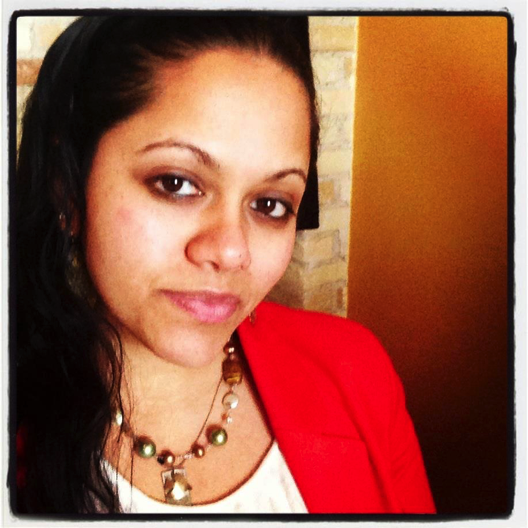 Many biking and walking organizations are seeking to better represent equity, diversity and inclusion in their internal processes and external efforts. But, as we begin to engage in this critical work, we can sometimes get tripped up by a lack of shared language or understanding of key concepts around racial justice.
Many biking and walking organizations are seeking to better represent equity, diversity and inclusion in their internal processes and external efforts. But, as we begin to engage in this critical work, we can sometimes get tripped up by a lack of shared language or understanding of key concepts around racial justice.
In our Distance Learning Webinar last week, we hosted Simran Noor, Director of Policy & Strategy at the Center for Social Inclusion to help us get a solid baseline.
We know that equity can't be achieved by reading toolkits or checklists — or even built on the models of others. Instead, equity is achieved by investigating and shifting the way we define, assess and implement our work.
To that end, we asked Noor to help us explore some of the fundamental underpinnings and terms around racial justice so bike-ped organizations can feel confident starting and sustaining productive conversations around race that begin that shift and, ultimately, move bike-ped equity forward.
Watch the full recording in the video. Or read some of my key takeaways — interspersed with additional reading and resources provided by Noor — below.
Examining Biking and Walking through a Racial Justice Lens from Alliance for Biking & Walking on Vimeo.
What does race have to do with biking and walking?
Noor: A lot of times, we think we can’t talk about race — that when we talk about race things will fall apart; that, in a policy context, it’s a term we can’t approach. We [CSI] strongly disagree. Not only can we talk about race, we have to. Communicating effectively about race is essential to get to this shift where communities of color are valued and positioned as experts and drivers of this work.
But, wait... aren't we living in a "post-racial" society?
Noor: I don't know that there could be a time when we don't see race. We do have our first Black president but race continues to be a really powerful determinant of difference [in life outcomes]. According to the Southern Poverty Law Center, the number of hate groups has risen dramatically; we’ve seen a backlash around conversations about race; we have the largest racial wealth gap of the past 25 years. We couldn’t be good stewards and advocates if we don’t recognize the attack on Black lives. There is something wrong in our society when we continue to see this cycle of violence against Black bodies; when we look at outcomes for communities of color; when we look at how racially segregated our neighborhoods are, and how poorly folks of color are doing. Those social conditions are symptoms of something else operating.
What else is at work? Institutional and structural racism.
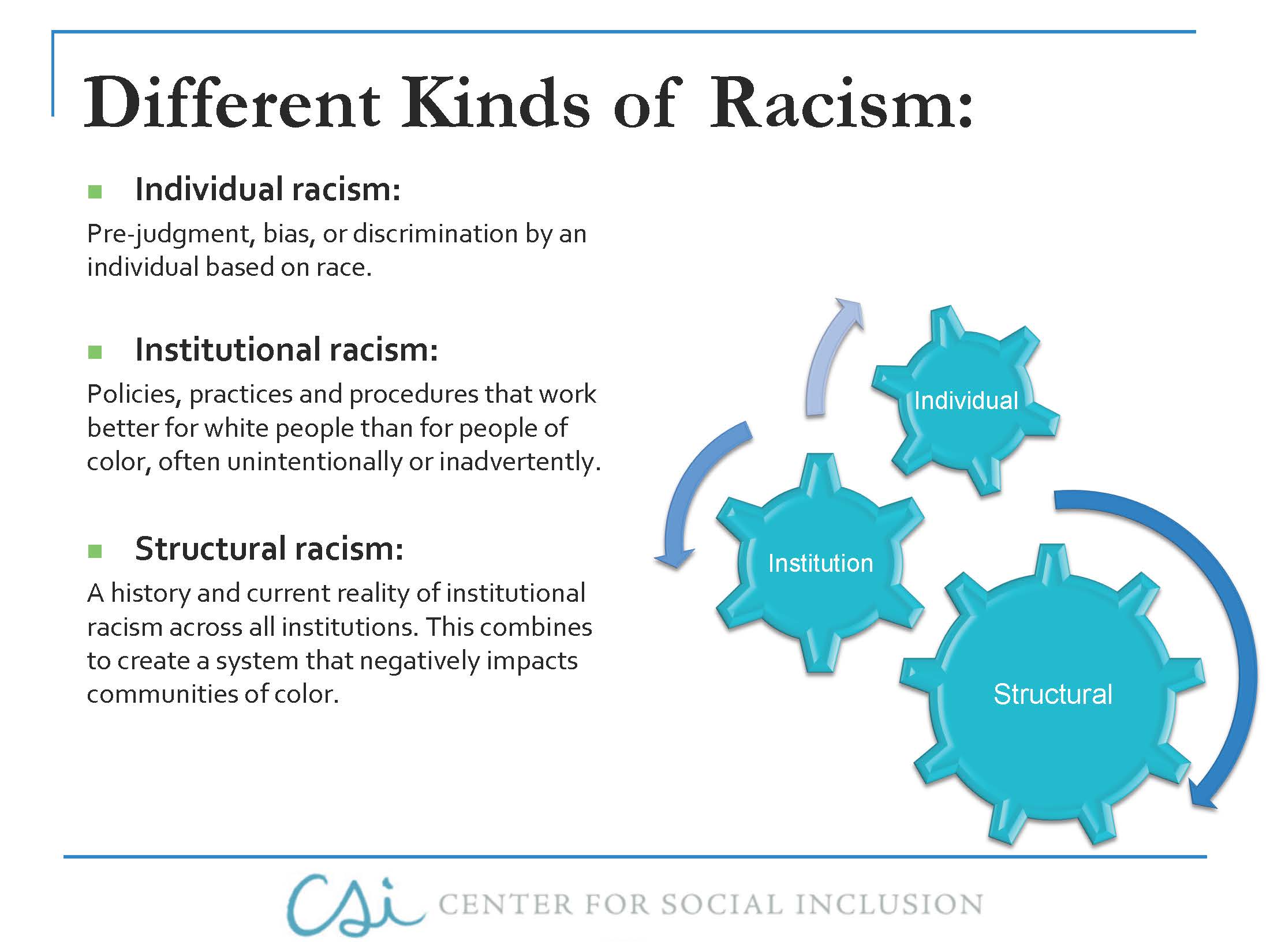
So what is "race"? The color of our skin?
Noor: Race is a construct. It’s a modern idea. It’s a social construction driven by policy that decided who’s been considered white in this country — and that’s changed over time. And this very much speaks to bike movement: We didn’t choose this system but we do have a responsibility to address it. As citizens perhaps we aren’t the ones that are exacerbating racial inequity, but we have a responsibility to address it — and it’s possible in our lifetime.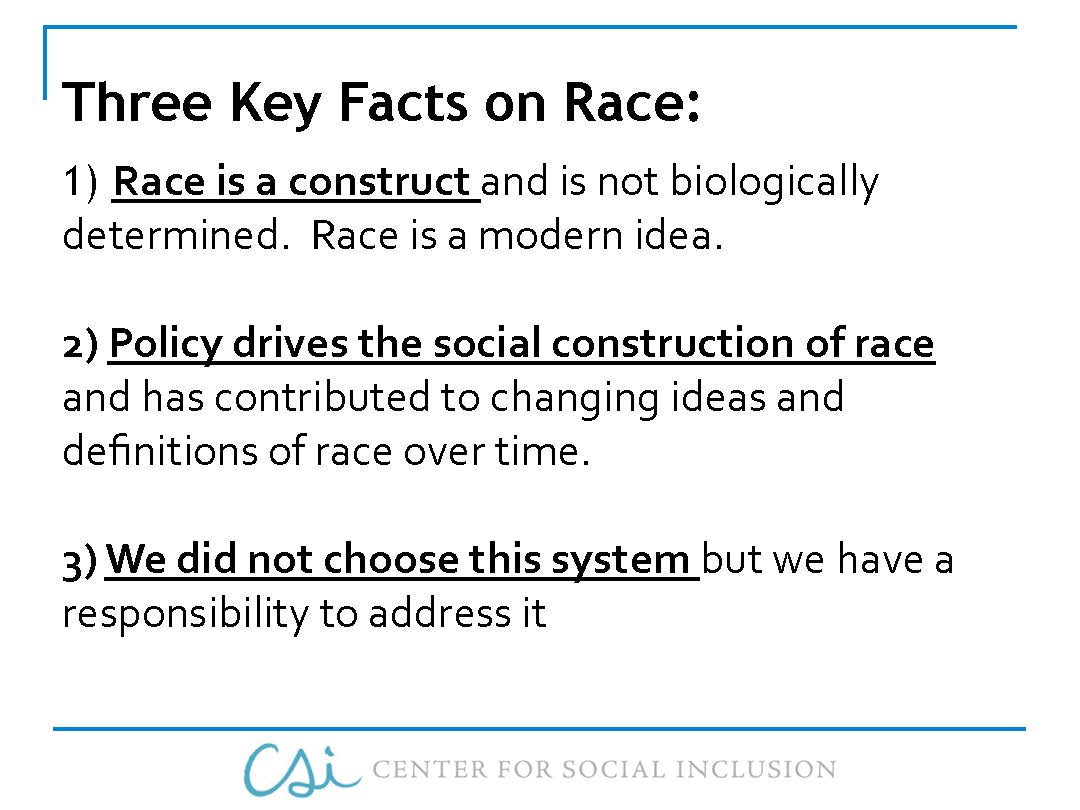
But, wait. I'm not racist — and neither is my organization. Our work doesn't have any racial biases... does it?
Noor: Implicit bias is natural. There's nothing wrong with it. There’s no way to get rid of it. But when we attempt to suppress that we have implicit bias it makes it more difficult for us to hold what those biases are and how they play out. Research has confirmed that, rather than repressing those biases, if we openly address and acknowledge them, we can overcome them. That’s an important piece to note: By actually surfacing bias, we can address it. At an interpersonal or organization level, we need to see how those implicit biases play out, whether through our partnerships or overall framing for our movement.
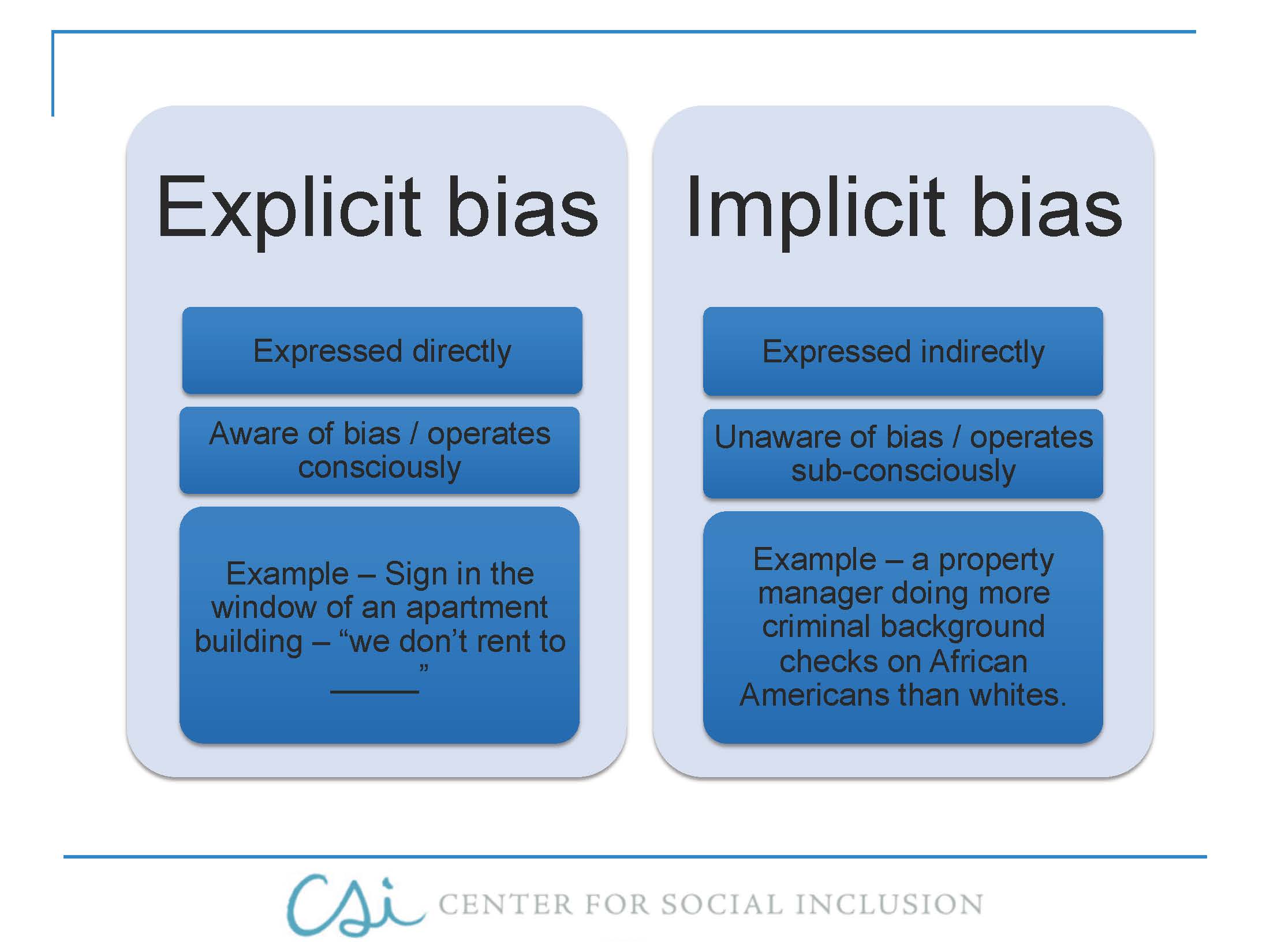
Additional resources:
- Implicit Bias online test (Harvard)
- State of the Science: Implicit Bias Review 2014 (Ohio State University)
- Proven Strategies for Addressing Unconscious Biases in the Workplace (Diversity Best Practices)
What if we have a diverse staff that's representative of the communities we work in?
We absolutely need a diverse set of partners and we need staff to represent the communities that we're targeting. That’s incredibly important. But diversity as a strategy is not enough. It’s still an individual [not a structural] strategy that doesn’t necessarily lead to equitable outcomes. We need to be holding that as a piece of a much broader strategy.
So how is equity different than diversity?
Equity is giving everyone the same results rather than giving everyone the same thing. [Example: At public events women often face long waits for the restroom, despite the fact that there are equal number of restrooms as for men. To make women’s wait times akin to men would require a different number of restrooms.]
Equity is both a lens and an outcome — and you can’t get to that outcome if the process isn’t equitable. So we need to transform structures. Thinking about how you define racial equity within your context is a really important step.
 What exactly is structural racism — and how does that relate to biking and walking?
What exactly is structural racism — and how does that relate to biking and walking?
There was a time when many decisions were heavily motivated by race. While that’s not necessarily the case now, you don’t have to be explicit about race. Whiteness and dominant culture are normalized. The structures do what they do invisibly and reinforce that disinvestment and disparity.
Disparities are a result of the way systems are set up to operate. Part of our role in addressing structural racial inequity is surfacing those policies that have been foundational and design policy to begin to dismantle that.
There are ways in which private and public institutions interact to create racial disparities, so what we’re really looking at is connection points between [areas like housing, education, jobs, etc]. We’re not looking at transportation as its own area. We can't silo transportation. Sometimes when we think about advocacy and policy strategy — the interruptions and disruptions needed to shift our system — those solutions can’t be found within our own silos. So we have to be thinking about those intersection points.
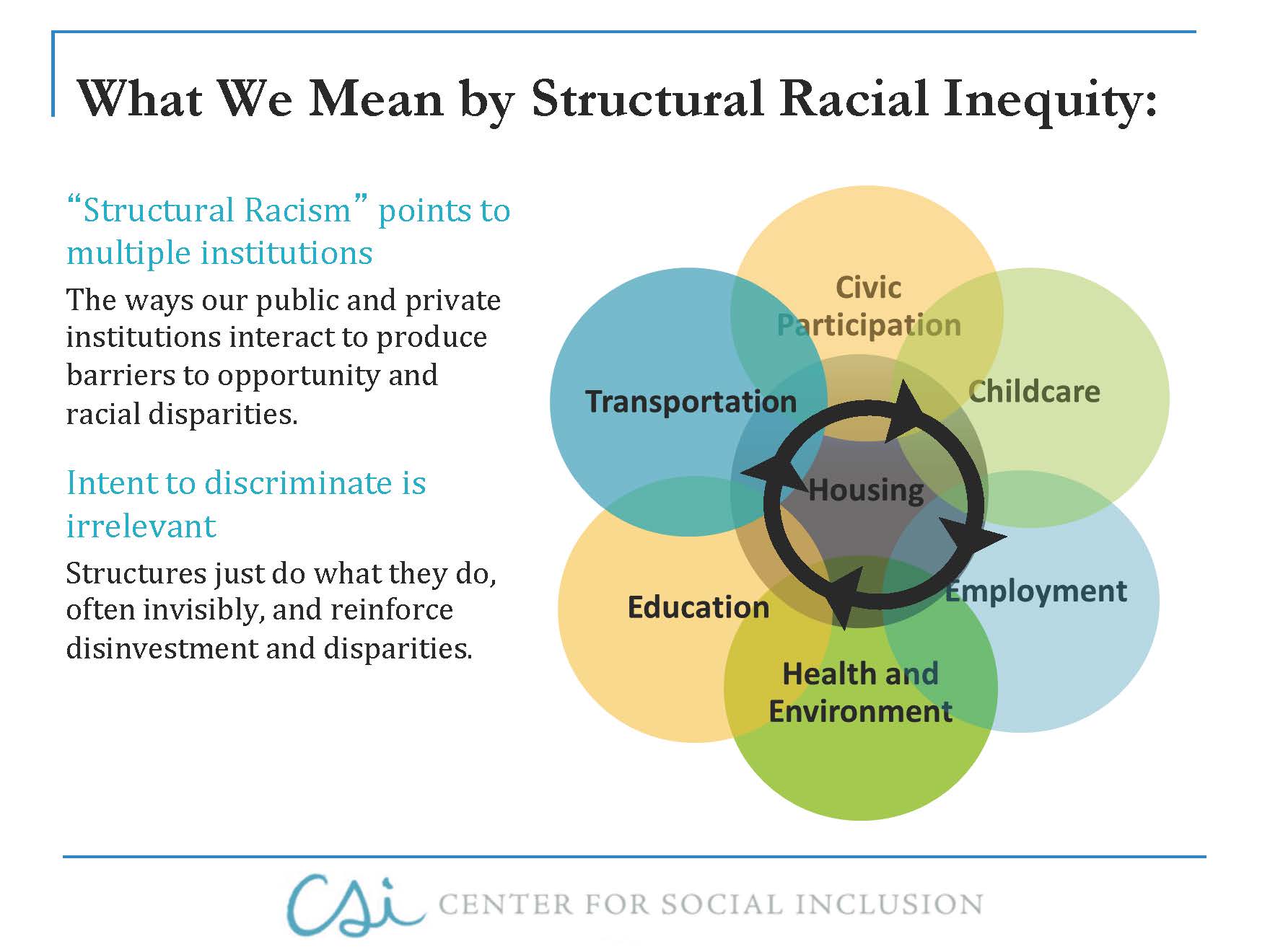
Additional reading:
- Structural Racism (Poverty and Race Research Action Council)
- Dominant and Non-dominant Culture Dynamics (Tim McNichol)
- The Possessive Investment in "Whiteness" (John Lipsitz, University of California- San Diego)
What about examining our work as it applies to class and income? Does that implicitly address race, too?
Some people say it’s just about income. No, it’s about race. Persistent poverty has a color. [Economic] mobility is much more difficult for people of color because of the deep segregation — based on race.
Additional reading:
So what can we do? What steps can we take to see our work through a racial justice lens?
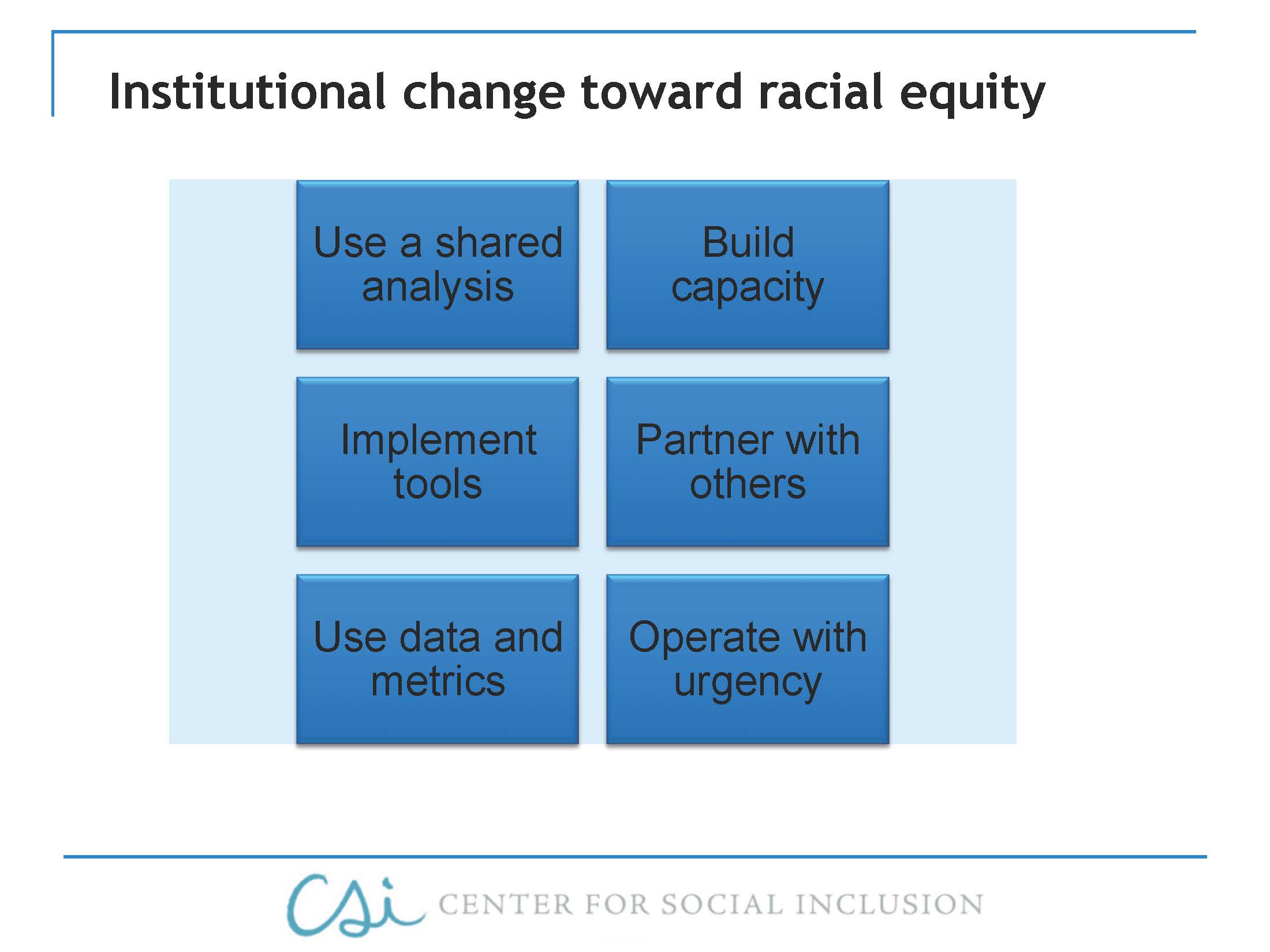
Being in solidarity rather than leading.
I think it’s important to start with messaging and framing. Thinking about biking and walking in and of itself, it’s an identity piece for you all as a movement. I think there’s power in framing biking and walking in a larger context. What does a whole, vibrant, healthy, safe community look like — and where do you fit within that?
I think the second thing is listening and learning. Take time to understand those perspectives [in communities of color] in policy development and think about what are the root causes [for current paradigms and situations]. We often privilege academic learning and knowledge, but what people experience everyday is equally important in how we shape and drive policy. Listening to communities and folks of color, and coming out for events around Black Lives Matter or related specifically to immigration issues, or police accountability [is important].
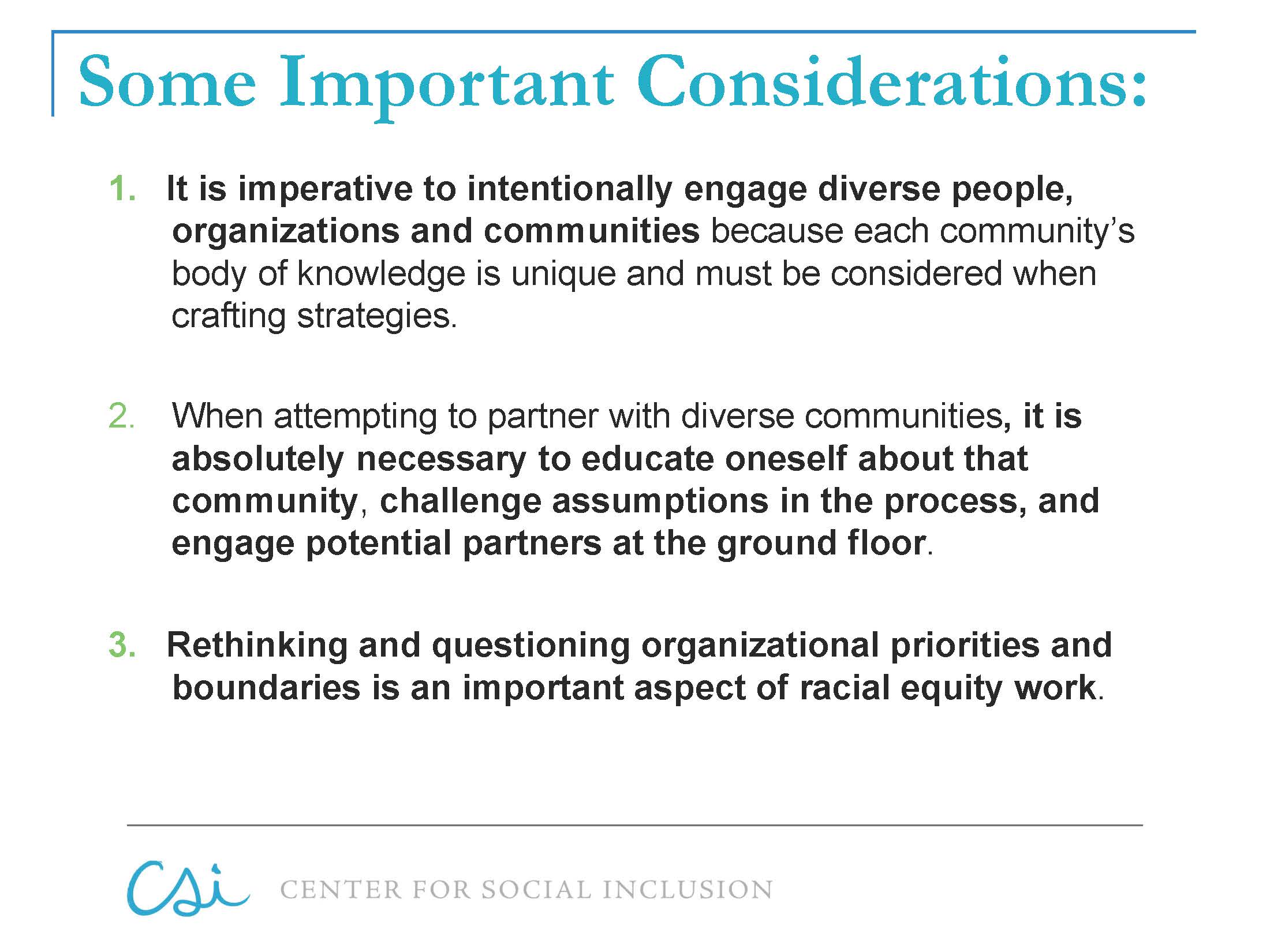
A lot of the time we enter into advocacy policy space as transactional relationships. That’s not the way we’re going to shift anything in a structural way. There are intersection points on projects at a local or regional level where the bike and ped advocacy community could lend support. So looking for those opportunities and offering rather than asking first. Rather than being extractive, how do you shift that relationship to genuine trust-building by listening first?
We may think of our movement as under-resourced, but when you think about the scale of smaller grassroots organizations in communities of color, the bike-ped community may have a lot more political capital or media support. So think about how to make those assets to other movements, what role you can play and what it means to be in solidarity.
Additional reading:
What's next in this conversation?
This webinar was intended to be the start, not the full extent, of our journey to examine biking and walking through a racial justice lens. We'll be continuing to work with Noor and other partners — so stay tuned to the Alliance blog. Questions? E-mail me at This e-mail address is being protected from spambots. You need JavaScript enabled to view it .

